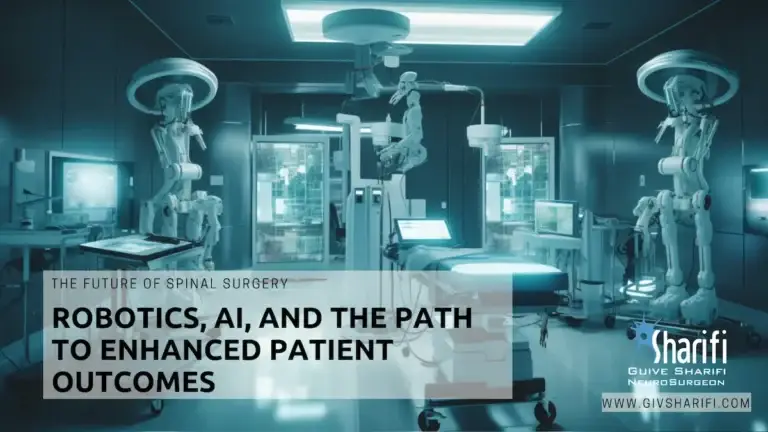The Rise of Robotics and AI in Spinal Surgery
Spinal surgery has come a long way over the years, with significant advancements in medical technology and surgical techniques. One of the most ground-breaking developments is the integration of robotics and artificial intelligence (AI) in spinal surgery, offering improved precision, efficiency, and patient outcomes.
Minimally Invasive Techniques: A New Era of Spinal Surgery
Minimally invasive in this type of surgery has become increasingly popular due to its numerous benefits, including:
- Smaller incisions
- Reduced blood loss
- Shorter hospital stays
- Faster recovery times
- Lower risk of complications
Robotics and AI play a significant role in the success of these minimally invasive procedures, enhancing the surgeon’s capabilities and making complex surgeries more accessible.
You might like this article: The Future of Brain Surgery: Advancements and Innovations

Robotic-Assisted Spinal Surgery: Precision and Efficiency
Robotic-assisted spine surgery utilizes advanced robotic technology to improve surgical accuracy and efficiency. Key benefits include:
- Enhanced precision: Robotics allows for more precise movements, resulting in more accurate placement of screws and implants.
- Reduced radiation exposure: Robotic systems can minimize the need for fluoroscopy, decreasing radiation exposure for both patients and medical staff.
- Improved surgical planning: AI-driven software can create 3D models of the patient’s spine, enabling surgeons to plan and simulate procedures before entering the operating room.

AI (Artificial Intelligence): Data-Driven Decision-Making
AI is revolutionizing spine surgery by:
- Analyzing vast amounts of data to identify trends and patterns helps surgeons make better-informed decisions.
- Assisting in diagnostics, enabling more accurate identification of spinal conditions and better treatment planning.
- Facilitating personalized treatment plans based on patient-specific data improves patient outcomes.
The Road Ahead: Future Applications of Robotics and AI
As technology continues to advance, the potential applications of robotics and AI in spinal surgery will only grow. Some exciting possibilities include the following:
- Telemedicine and remote surgery: Surgeons could remotely perform robotic procedures, expanding access to specialized care in underserved areas.
- AI-powered rehabilitation: AI-driven therapy programs could help patients recover faster by tailoring rehabilitation exercises to their specific needs.
- Enhanced surgical training: Robotics and AI can be used to create realistic surgical simulations, providing a safe and effective way for surgeons to practice and improve their skills.

Embracing the Future of Spinal Surgery
Integrating robotics and AI in spine surgery is a game-changer, transforming how surgeons perform procedures and improving patient outcomes. As these technologies continue to evolve, we can expect to see even more impressive advancements that will further revolutionize spine surgery and healthcare as a whole. Embracing these innovations is essential for staying at the forefront of medical excellence and delivering the best possible care to patients.
All pictures in this article are generated by AI.





